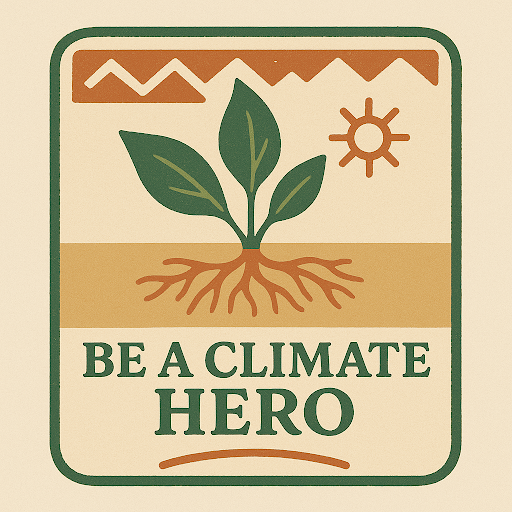Be A Climate Hero
- Maddy Kangas
- Aug 7
- 2 min read
In the garden, we have a unique opportunity to be part of the solution that is climate change. It can seem overwhelming to execute changes that will make a difference. A good place to start is education. What can we learn on an individual level to nurture our good Earth and help her to heal?
We have begun the journey by tending this plot of land. We have improved the soil which draws down carbon. We have provided a place for the bees, chickens and birds to make their contributions to the ecosystem. We have planted native pollinator plants to give the butterflies a place to thrive. We have built a community of humans and we are seeking to make contributions to the environment. We are changing the way we treat the Earth by not pouring chemicals on the weeds. We are exploring ways of contributing food to those who are hungry. We are exploring ways of creating peace in our community.
Our garden is part of a larger plan to address climate change. The City of San Jose has a bold agenda for becoming carbon neutral by the year 2030. That is five years from now. The program is called Climate Smart San Jose. San Jose is the largest U.S. city to make a pledge of this scope.
The City has many resources on its website at:
Here are other resources to explore:
“Kiss the Ground” a Netflix documentary
Read :Braiding Sweetgrass” by Robin Wall Kimmerer
Why it’s great: Blends Indigenous wisdom, science, and the sacred relationship between humans and the land. Inspires deeper connection to nature and stewardship.
Climate tie-in: Cultivates ecological awareness, reciprocity, and hope — powerful antidotes to climate despair.
We hear a lot about carbon being neutral. Here is a definition:
Carbon neutral, achieving a balance where the amount of carbon dioxide released into the atmosphere is equal to the amount of carbon dioxide removed from it.
Can you take one small action and make it a habit? Something like one meatless day during the week. How about not taking the register paper when making purchases. The big actions are reducing your transportation footprint. Can you reduce that by 5% per week? Things that have become easy like recycling, repurposing, and using reusable containers are important. Find small sustainable actions to change your impact on the environment. And of course, keep growing and planting and helping our garden thrive.
Karen Marshall









Comments